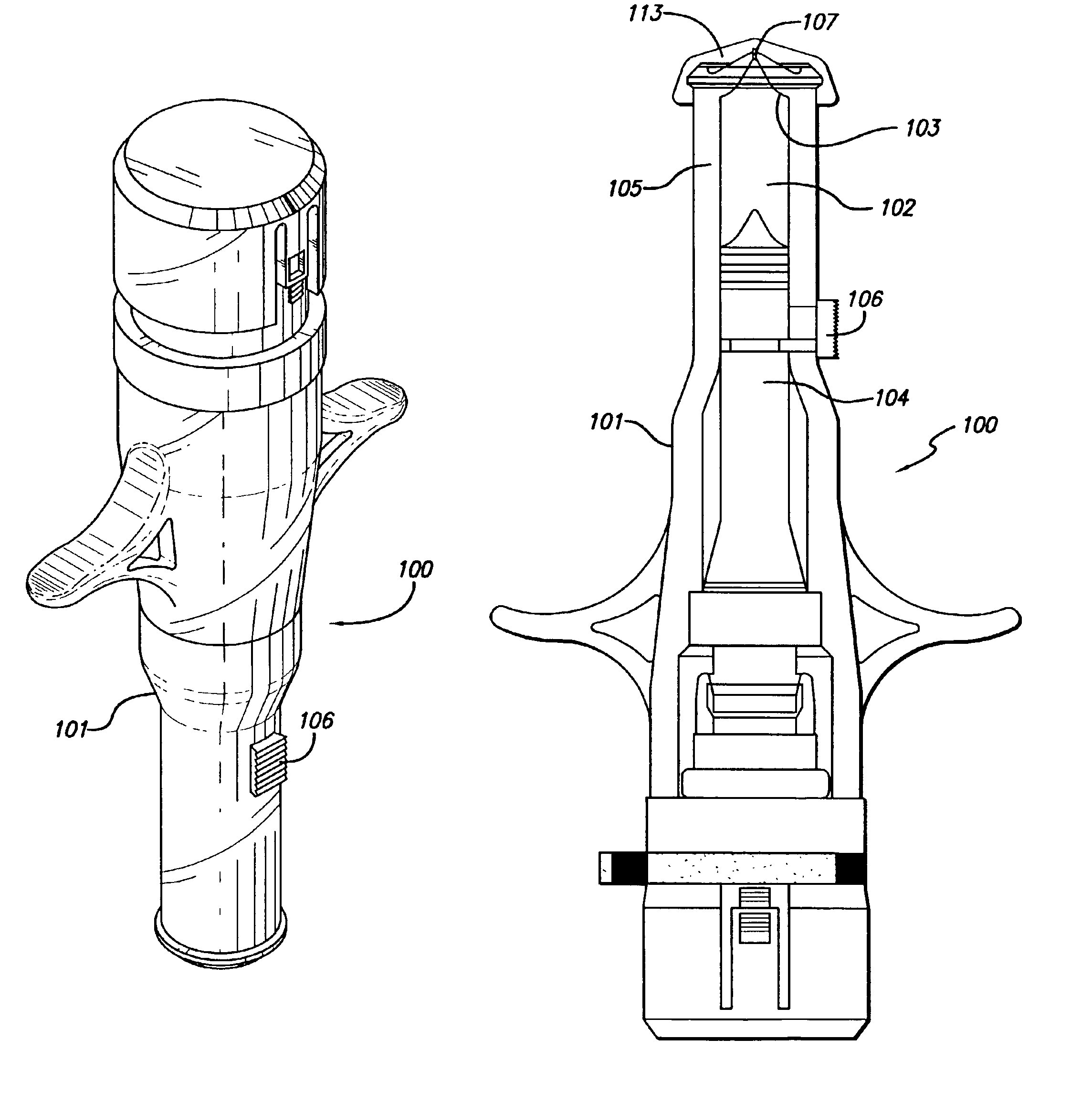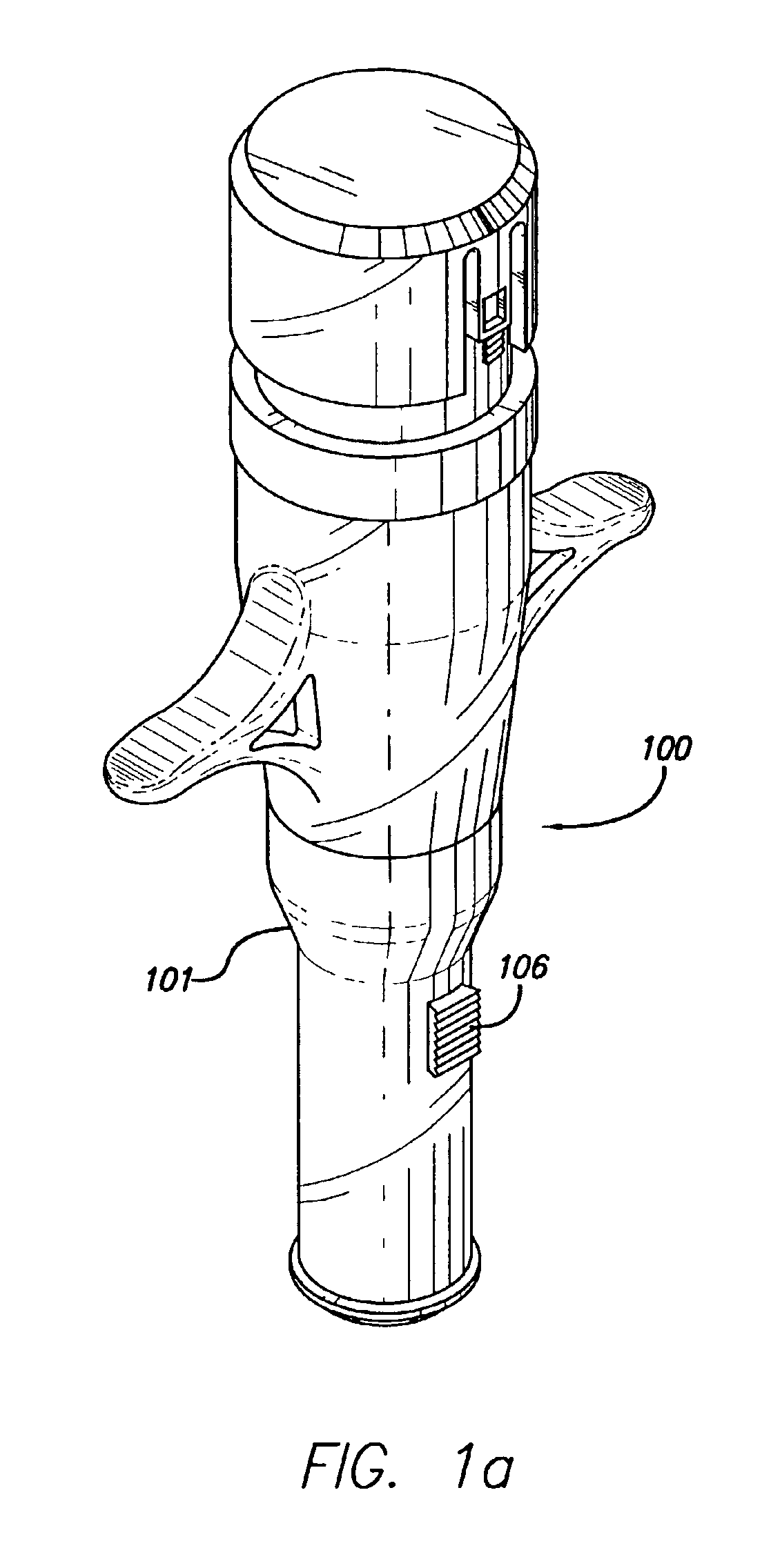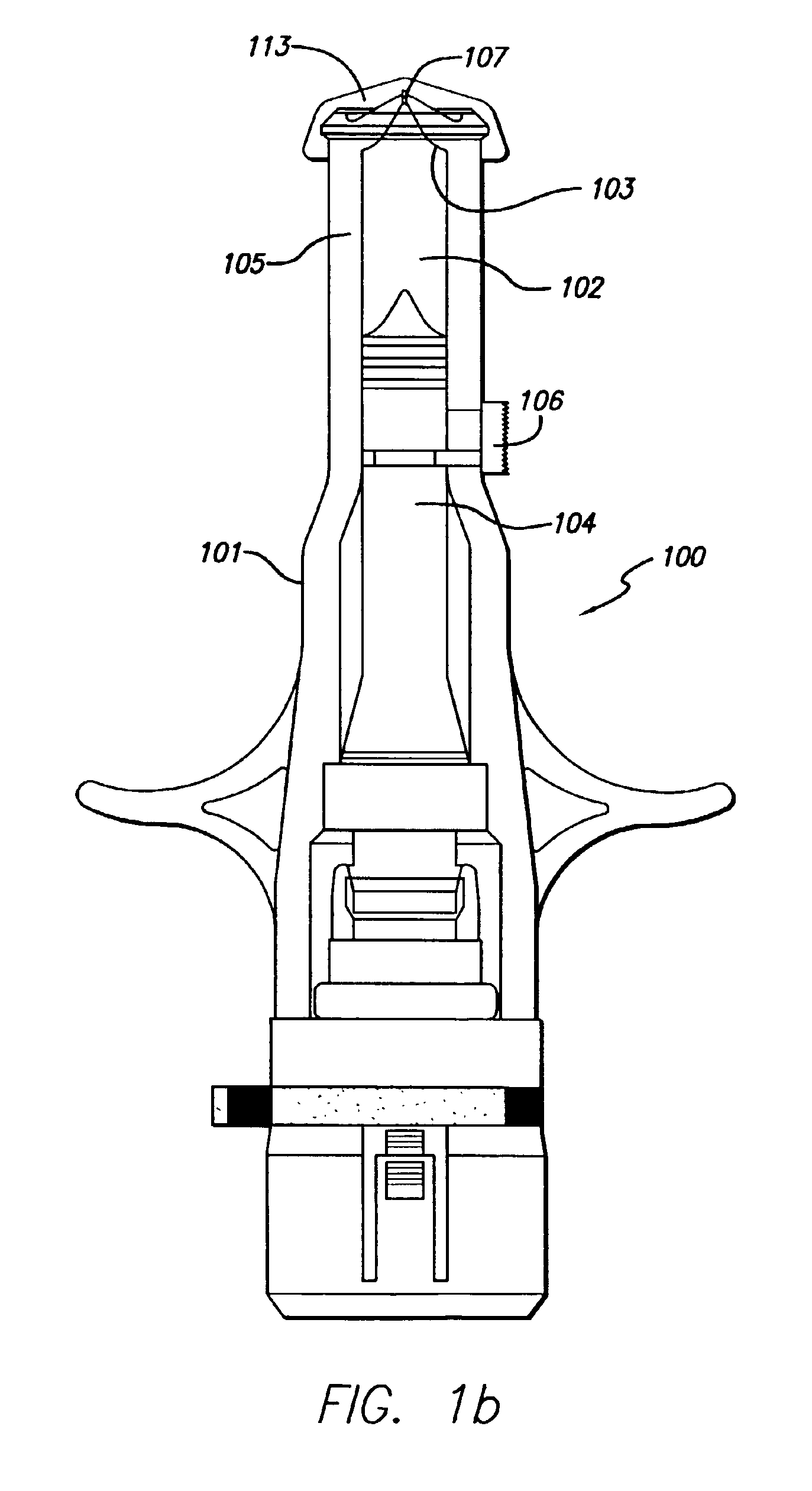Method and apparatus for adjusting the contents of a needle-less injector
a technology of injector and contents, which is applied in the field of needleless injectors, can solve the problems of pain for patients, high production cost of traditional needle injectors, and difficulty in using pre-packaged medication doses, and achieve the effect of reducing the volume of injectable products
- Summary
- Abstract
- Description
- Claims
- Application Information
AI Technical Summary
Benefits of technology
Problems solved by technology
Method used
Image
Examples
example
Adjusting the Contents of a Needle-Less Injector
[0049]A needle-less injector contains an injectable product, and an air bubble has developed in the product section thereof. A sleeve adjustment switch is included on the needle-less injector. A user removes a cap from the dispensing end of the needle-less injector, and, holding the needle-less injector with the dispensing end oriented in an “up” direction, the user displaces the sleeve adjustment switch until the air bubble is evacuated from the product section of the needle-less injector and a small volume of fluid begins being forced through the orifice of the needle-less injector. The user then ceases displacement of the adjustment sleeve, and administers a needle-less injection with the needle-less injector.
PUM
 Login to View More
Login to View More Abstract
Description
Claims
Application Information
 Login to View More
Login to View More - R&D
- Intellectual Property
- Life Sciences
- Materials
- Tech Scout
- Unparalleled Data Quality
- Higher Quality Content
- 60% Fewer Hallucinations
Browse by: Latest US Patents, China's latest patents, Technical Efficacy Thesaurus, Application Domain, Technology Topic, Popular Technical Reports.
© 2025 PatSnap. All rights reserved.Legal|Privacy policy|Modern Slavery Act Transparency Statement|Sitemap|About US| Contact US: help@patsnap.com



